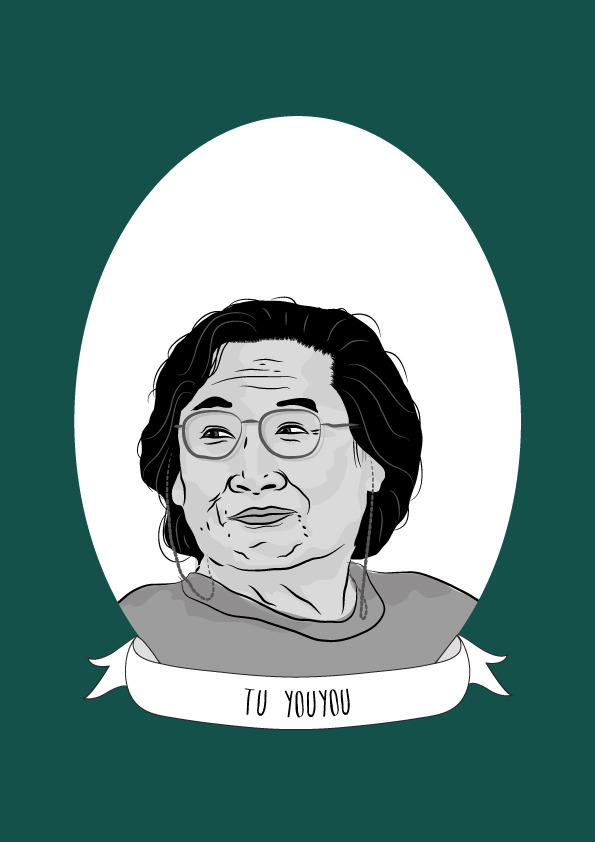Tu Youyou is a Chinese medical scientist, pharmaceutical chemist, and educator. She has received the 2011 Lasker Award in clinical medicine and the 2015 Nobel Prize in Physiology or Medicine. She is the first Chinese woman in history to receive the Nobel Prize in the sciences.
Tu was born in Ningbo, Zhejiang, China in 1930. She attended Xiaoshi Middle School before transferring to Ningbo Middle School. She continued her education at Peking University Medical School (which, during her time there became Beijing Medical College). She studied at at the Department of Pharmaceutical Sciences, and graduated in 1955.
After graduation Tu worked at the Academy of Chinese Medicine in Beijing. In 1980 She was promoted to a researcher position following Chinese economic reform. In 2001 she began an academic advisor for doctorate candidates. She is currently the Chief Scientist in the Academy.
Tu’s early work was in the study of Lobelia chinensis, a traditional Chinese medicine used for curing schistosomiasis which is caused by parasitic worms which infect the urinary tract or the intestines. Schistosomiasis was widespread in the first half of the 20th century in South China.
During the 1960s and 70s China was undergoing a Cultural Revolution, scientists were denigrated as one of the nine black categories in society according to Maoist theory but Tu continued to work as a scientist. In 1967 during the Vietnam War, Ho Chi Minh who was the leader of North Vietnam asked Chinese Premier Zhou Enlai for help in developing a malaria treatment for his soldiers who were contracting chloroquine-resistant malaria while travelling down the Ho Chi Minh Trail. As malaria was also a major cause of death in China’s southern a secret drug discovery project, named Project 523. Tu was appointed the head of the research group in 1969. Scientists worldwide had screened over 240,000 compounds without success but Tu had the idea that they should be screening Chinese herbs. She investigated Chinese medical classics in history and visited practitioners of traditional Chinese medicine all over the country, collecting her findings in a notebook called A Collection of Single Practical Prescriptions for Anti-Malaria. She summarised 640 prescriptions within the book and her team screened over 2,000 traditional Chinese recipes and made 380 herbal extracts, which were tested on mice.
Sweet wormwood (Artemisia annua) which was used for “intermittent fevers”, a symptom of malaria provided some success. Tu discovered how to extract this using The Handbook of Prescriptions for Emergency Treatments, written in 340 by Ge Hong. She proposed a method of using low-temperature ether to extract the effective compound and animal tests showed it was completely effective in mice and monkeys. Her innovation meant that she had boosted the potency and reduced the toxicity of the extract. By 1972 Tu and her colleagues had been able to obtain the pure substance which they named qinghaosu (青蒿素), or artemisinin. Tu volunteered to be the first human subject for testing and subsequently conducted successful clinical trials with human patients. In 1981 she presented the findings relating to artemisinin at a meeting with the World Health Organization. Tu continued to study the chemical structure and pharmacology of artemisinin, her group were able to determine the chemical structure of artemisinin and in confirming the arbonyl group in the artemisinin molecule she synthesized dihydroartemisinin.
Tu’s discovery in treating malaria has saved millions of lives, especially in the developing world and in October 2015 she became the first Chinese woman to receive a Nobel Prize in the sciences. She is the co-recipient of the Nobel Prize in Physiology or Medicine 2015 for her discoveries concerning a novel therapy against Malaria. She shares the prize with William C. Campbell and Satoshi Ōmura. She has also won many other awards, including the Albert Lasker Award for Clinical Medical Research (2011) and the Outstanding Contribution Award, China Academy of Chinese Medical Sciences (2011). Tu is the first native Chinese in history who was educated in China and whose work was carried out within China to receive the Nobel Prize in natural sciences and Lasker Award.
